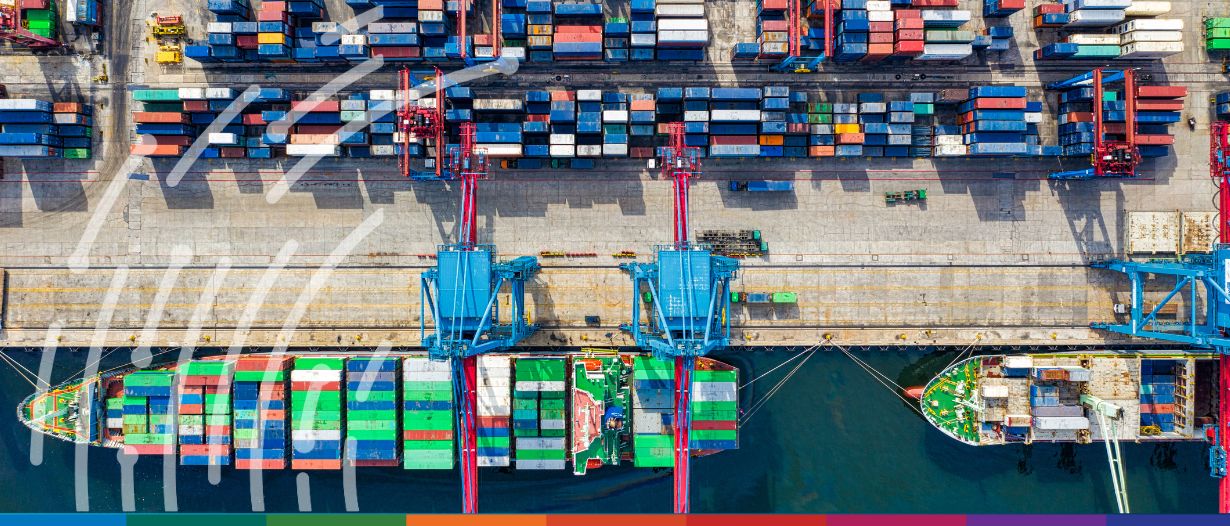Following the UK’s exit from the EU, there was concern amongst international trade experts that UK exporters weren’t aware that from 1st January 2022, they would be required to demonstrate compliance with the UK-EU rules of origin laid out in the Trade and Cooperation Agreement (TCA).
This concern was realised in the following years, as numerous manufacturers have continued to declare preferential origin on their export commercial invoices without checking whether their products actually comply.
Whilst the issue was highlighted by Brexit, Rules of Origin are an important element of international trade that all importers and exporters need to understand regardless of the customs territory they are dealing with.
To help clarify this topic, I will give an overview of what rules of origin are, why they matter, the difference between preferential and non-preferential rules and a brief explanation of each rule. For simplicity’s sake, this article is written in the context of the UK/EU Trade and Cooperation Agreement, although the broad principles apply to all trade.
What are rules of origin?
The origin of goods is an important concept, as it is central to determining the customs duties and taxes related to a specific good. It also is important to some trade restrictions such as quotas or labelling.
Rules of Origin are the rules that determine where a good was obtained or manufactured (its economic nationality).
Why do they matter?
Products that meet the rules of origin can be sold tariff-free between the UK and EU under the terms of the TCA, meaning that any goods that fail to meet the criteria will cost more than similar items that do comply.
During the one-year grace period granted in 2021, it was clear that many companies were stating that their products complied with the rules of origin without checking.
A frequent instance involves goods imported from China, repackaged, and then exported to the EU as UK-origin products. Repackaging does not alter the origin of the goods, meaning the EU customer should pay import duty as though the goods were directly imported from China.
Non-Preferential or Preferential?
Non-preferential rules of origin are those which apply in the absence of any trade preference — that is, when trade is conducted on a WTO or most-favoured-nation basis. Not all countries apply specific legislation related to non-preferential rules of origin.
However, some trade policy measures such as quotas, anti-dumping duties or “made in” labels may require a determination of origin and, therefore, the application of non-preferential rules. In this era of sanctions and escalating trade tensions between the US and China, and China and the EU, non-preferential rules of origin will be of increasing importance. The non-preferential rules of origin are Wholly Obtained and Last Substantial Transformation.
The purpose of Preferential Origin is to provide duty benefits through Free Trade Agreements. Rules of origin ensure that the benefits of an agreement are only given to those products which “originate” in one of the parties to the agreement. The preferential rules of origin are the Tariff Shift Rule, the Value Percentage Rule and the Specific Process Rule.
Non-Preferential: Wholly Obtained
Wholly obtained is fairly straightforward, it covers the cases in which a good is entirely obtained, extracted or manufactured in a single country without using parts imported from other countries, for example, natural products extracted, harvested, hunted or caught in a country or any good produced in a country exclusively from other wholly obtained goods from that country.
Beer made in the UK could be an example of this as all of the ingredients can be grown or obtained in the UK.
Non-Preferential: Last Substantial Transformation
Substantially transformed goods are those which are produced from or with imported materials, or those which require processing in different countries.
Attributing the origin of a good to a single country can be a complex exercise in these cases because several materials, parts, processes or a large number of countries may be involved.
The purpose of the rule of origin therefore is to clearly identify when exactly a transformation occurs, that is, when the final product resulting from a process is sufficiently different from the inputs used to manufacture it.
In general, the criteria of the last substantial transformation are expressed in three ways:
- By a rule requiring a change of tariff subheading in the Harmonised System nomenclature;
- By a value-added rule, where the increase of value due to assembly operations and incorporation of originating materials represents a specified level of the ex-works price of the product.
- By a list of manufacturing or processing operations which meet the origin rules for the goods;
Preferential: Tariff shift rule
The tariff shift rule is fairly straightforward. The exact terms will vary from trade agreement to trade agreement. Still, an example would be that all material (inputs) used to manufacture something must be classified in a tariff heading (the first 4 digits of the HS code) different from the final product. e.g. leather (4104) + buckle (8308) + zip (9607) = handbag (4202).
Preferential: Value percentage rule
The value percentage rule specifies what percentage in value the raw materials cost is allowed to be of the final selling price of a product. It will vary for each commodity code and trade agreement, so it’s important to refer to the terms of the FTA relevant to the corresponding trading country.
An example might be chemical fertilisers, which are largely made of 3 elements: ammonium nitrate, potassium chloride and ammonium phosphate. A UK manufacturer might import the raw materials and export the final product to the EU.
The rule of origin for this HS code (3105 for chemical fertilisers) may say that at least 60% of the final value of the goods must have been added locally. Non-originating materials (imported inputs) must not be more than 40% of the final price, so if the ex-works price to the buyer is £100 per bag, the manufacturer can’t have spent more than £40 per bag on non-originating inputs.
Preferential: Specific Process Rule
Each FTA will have an annex where the specific processes that change the origin of an imported product (as identified by the HS code) are listed. Again, these will vary from agreement to agreement and will be influenced by the most highly prized industrial processes in each territory. There will also be a list of operations that are not considered sufficient to change origin e.g. repackaging.
As the UK seeks to reach £1 trillion of exports by 2030, an understanding of the relevant rules of origin can provide significant benefits in reduced tariffs or exploitation of quotas.
However, the constantly evolving landscape of sanctions, anti-dumping and countervailing duties imposed by the major economies on each other’s goods means non-compliance with rules of origin can entail serious financial penalties or even jail time. There has never been a more important time to understand rules of origin.

































